Herbs have so many different flavors and uses, from cooking and eating or drinking in tea to aromatherapy and medicinal remedies. There are literally thousands of varieties around the world, and they are so easy to grow and maintain if you follow a few basic guidelines. Growing herbs is such a hassle-free hobby, in fact, that you can grow them on your windowsill, even if you live in a tiny flat or apartment!
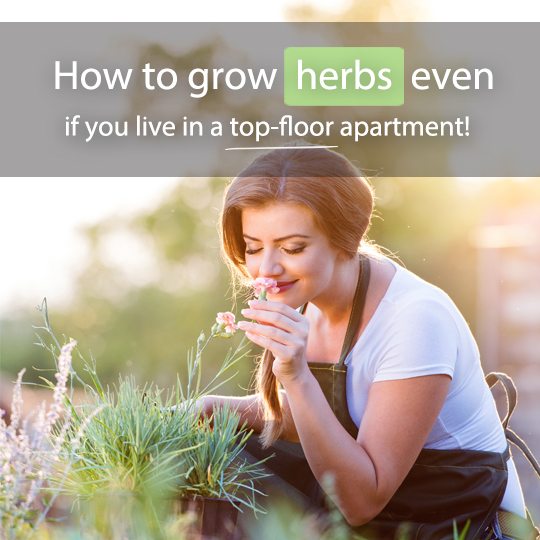
Benefits Of Using Fresh Herbs
Herbs have a range of uses and benefits, from aromatherapy and skincare to flavoring food and improving physical and mental health. Rosemary, basil, oregano, cilantro, sage and thyme, for example, are excellent natural anti-inflammatories. Herbs can also be used as a natural fertility enhancer, with red clover, red raspberry leaves and stinging nettle (which is wild but can be grown in the garden), being some of the best options. Certain herbs, including chamomile, lavender and Valerian root, can help reduce anxiety and stress when used in tea, essential oils, or even as bunches or potpourri around the house. Simply smelling these aromas have a calming effect on the mind.

How To Grow Herbs Indoors
As a generalization, herbs tend to be sun worshippers, so growing them inside on windowsills or next to glass doors makes a whole lot of sense. It also means you can add freshly picked herbs to your meals, even if you live in a top-floor apartment in the middle of a city, whether it’s snowing or blowing a gale outside! Not only that, but you’ll add some beautiful, natural greenery and aromas to your home. Although herbs are fairly self-reliant and easy to grow, there are some rules to follow to ensure you are protecting them and getting the most you can out of them.
Give Your Herbs Plenty Of Light
Because most herbs originate from the Mediterranean region, they need to see plenty of sunlight – for at least four hours of the day. In the northern hemisphere, they don’t really appreciate north-facing windows, because of the lack of direct sunshine, and, similarly, in the southern hemisphere, keep them away from south-facing windows.
Depending on where in the world you live and how extreme your winters are, you may need to provide your plants with extra light during those freezing months. The intensity of the light coming through the window can be as much as 10 times lower than in the summer. In this case, you can simply use grow lights to increase the length and intensity of your herbs’ light exposure.

Feed And Water Your Herbs Correctly
Probably the second most important thing, after light, for healthy indoor herb crops, is healthy soil. These plants tend to need extremely good draining (especially in winter) because during colder seasons they don’t release as much water from their leaves into the atmosphere. Because indoor herbs are kept in small pots or planters, water and air cannot move as easily, confining the plants’ roots. Adding sharp sand or perlite to a sterilized compost-based mix (which you can find at any garden center or plant nursery), will improve draining without stripping the herbs’ nutrients. As a general rule, most herbs like soils of pH 6 to 7.
Protect Your Herbs From Pests And Diseases
Just because your herbs are indoors, doesn’t mean they are not susceptible to common pests or diseases. In fact, the simplified ecosystem that indoor plants are introduced into means certain biological controls, such as predators that would keep pests under control in a more complex environment, may be lacking. It is therefore important to check relatively regularly for spots, bite marks or discoloration. You might even be able to see harmful bugs on your herbs, in which case, you can simply remove them by hand! Otherwise, alcohol-soaked cotton balls can be used to reach into areas that your fingers don’t.
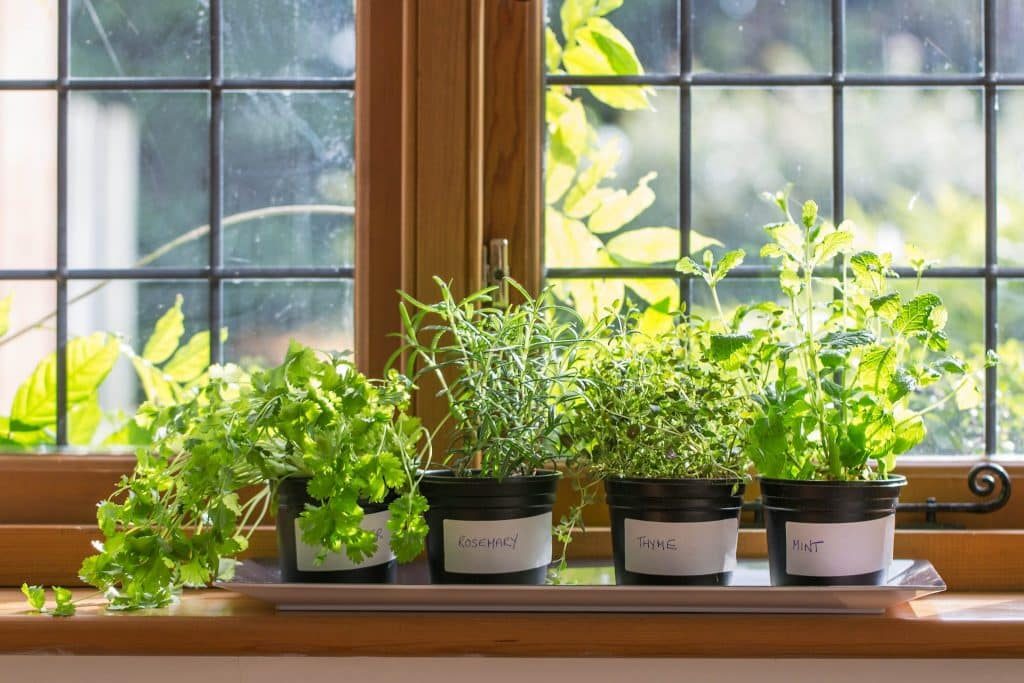
How To Grow Herbs In Outdoor Pots
This option is perfect if you have a patio, deck or balcony, and again, it can add a beautiful touch to any outdoor space. It is important, however, to ensure your outdoor space gets plenty of sunlight – at least four hours a day. By growing herbs in outdoor pots or troughs (you could even use an old bathtub as a herb garden!), you save yourself the time and hassle involved with digging and mapping out a garden in the backyard.
Because pots or containers create another small, simplified ecosystem for your herbs, when compared to planting them directly into the ground, you can basically follow the same guidelines as the indoor herbs above. The main thing to remember is to check them regularly, make sure they are soaking up plenty of sunlight, and give them plenty of water and food (think of them as pets!).
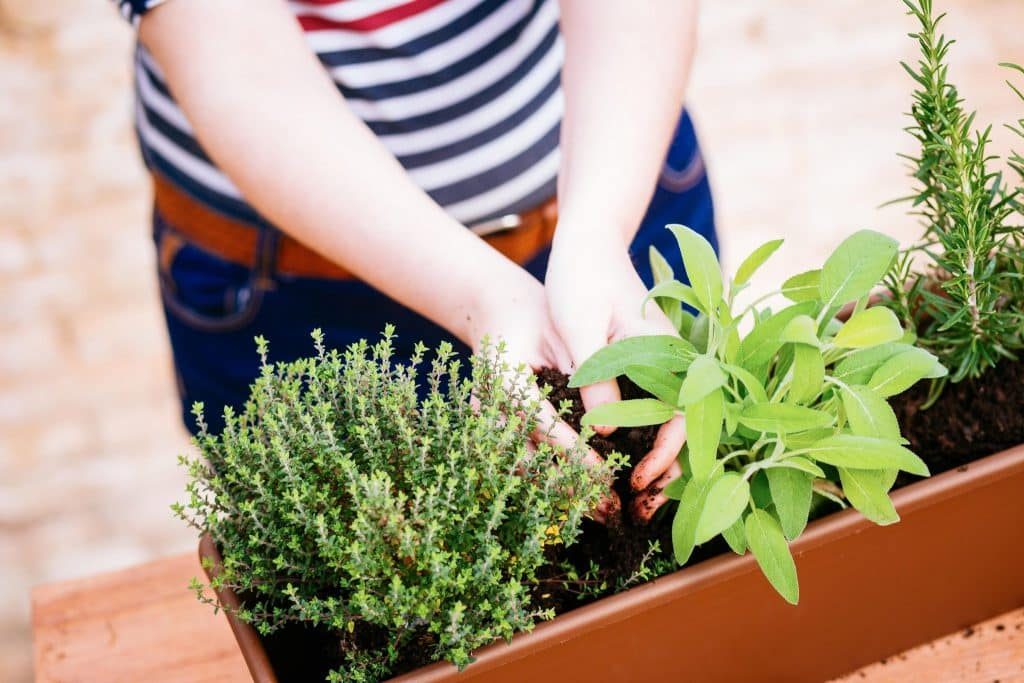
It is best to include a few herbs that require the same amount of water into one large pot, rather than having several small pots with individual herbs in them. There are a number of reasons for this – for a start, it creates a larger ecosystem and soil base, and it also makes the pot stronger and heavier, which will stop it from falling over in wind. Choose pots that are at least 8 to 10 inches in diameter to begin with, and then you can transplant them into larger pots or containers as they grow. Then, just remember to use good potting soil, filling the pots right up, and fertilize – preferably with organic matter.
How To Grow A Herb Garden
This paints that idyllic picture of picking fresh herb sprigs in the sunny weather – something you perhaps imagine doing when you have that lovely dream home and plenty of outdoor space. Depending where you live, this might be far easier to achieve than you think, and if you do have any green outdoor space – even just a few square feet, you actually can plant that picturesque little vegetable garden, and herbs are a great place to start because they are so easy!
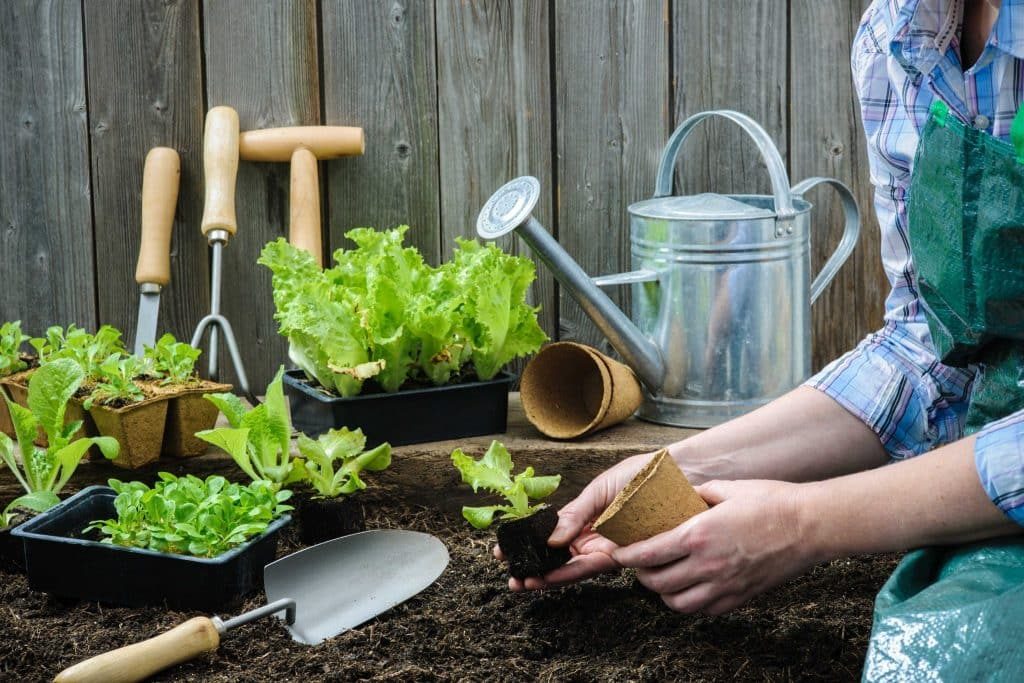
The same rules apply as with growing plants indoors or outdoors in pots in regards to sunshine, good soil drainage, water and fertilizer or compost. And if they are in the ground instead of pots, they are actually even easier to look after, because they like to spread out.
If you are planting a herb garden directly into the ground, give each plant plenty of space. As a general guide, give rosemary, mint, oregano, sage and marjoram a 4-foot-diameter section of the garden; for basil, thyme and tarragon, allow 2 feet; and for cilantro, parsley, dill and chives, allow 1 foot. Prepare the garden by loosening the soil with a large pitch fork, ensuring water can drain and creating space for the plant roots to move down into the ground. Once the soil has been dug and loosened, add some fertilizer or compost and mix it through to safeguard drainage and feed your herbs. Then you are ready to plant your herbs…

Planting Your Herbs
Whether you are growing herbs indoors or outdoors, in pots or a garden patch, the planting stage is always the same – with damp, loose soil and fertilizer. If you are planting your herbs in pots, fill them up with soil and fertilizer, add water and mix it so that the soil feels damp all the way through, and then dig holes in the soil to plant your herbs. If you are planting in the garden, turn the soil to loosen it, add water, and dampen the soil. The next stage is to dig holes, large enough for each plant (see guidelines above), turn the starter container upside down and tap the bottom. Gently pull the base of the stem and navigate the plant out, making sure you don’t lose any soil or break the roots. Place the herb plant into the hole and move soil around its edges, pressing down gently to secure it in place.
Water the plant straight away and then water again whenever the soil feels dry. Although we’ve pushed the importance of watering your herbs regularly, it is just as important not to over-water them! When in doubt, touch the soil – if it is damp, you don’t need to add water, if it is dry, add some.
Harvesting Your Herbs
Like planting and growing herbs, it is very easy to harvest them, and you can simply pick a few leaves or sprigs when you’re ready to use them in cooking or garnishing your food! There is a bit of a technique and some rules to remember when harvesting herbs, but it really is very simple…
Cut about one-third of the stem’s length (never any more than that), except for chives and lavender, which you can cut at ground level. Harvest your herbs regularly throughout the summer months to encourage new growth. It is best to harvest herbs early in the day, once the dew has dried, but before the sun is high. If you pick them after they’ve been sitting in the hot sun for hours, their essential oils will have been fried out.
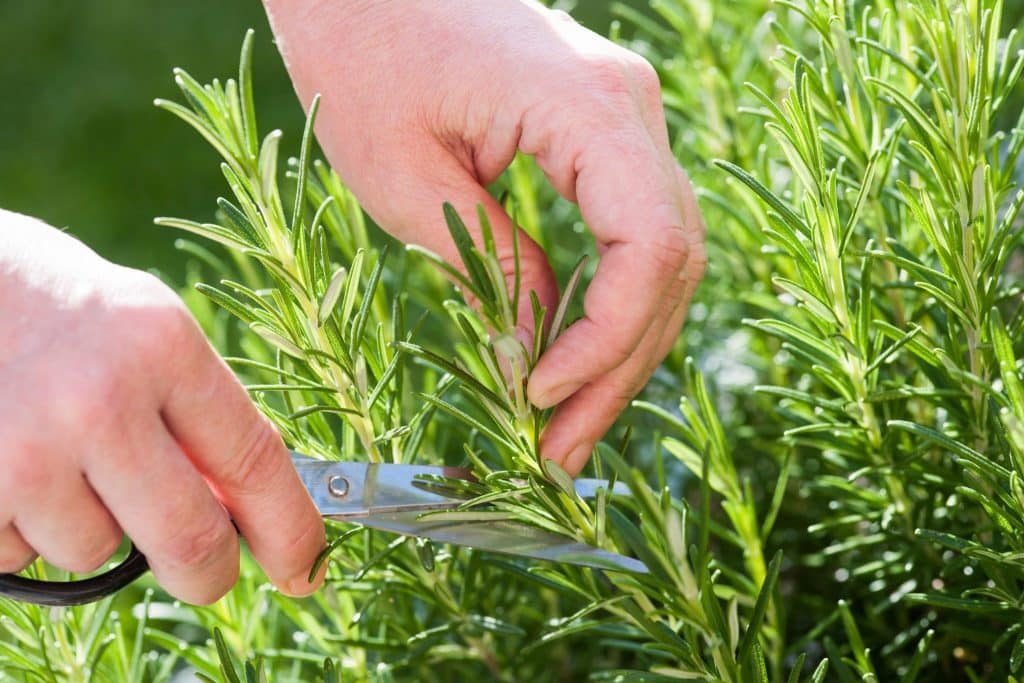
Storing Your Herbs
If you are not picking herbs to use immediately in cooking or as a garnish, or if you have leftover herbs, try the traditional method of hanging a bunch of about 10 to 15 stems in a warm, dry space that gets plenty of air. To do this, wrap the stems with a rubber band or twine and hang them on a drying rack or nail. Drying can take several weeks, depending on the type of herb and amount of moisture it has to begin with, but the method will preserve your herbs for future use. Once your herbs are dried, store them in airtight glass or ceramic containers, in a cool, dark area, like your pantry. This will protect their flavor and fragrance, and will keep them good for up to a year. Alternatively, if you want to keep your herbs fresh to use over a few days instead of drying them, you can simply place them in a glass, mug or jar of water in a cool part of your kitchen.

Choosing The Right Herbs For You
As we’ve kept reiterating, herbs are extremely easy to grow and look after, and once they get their sunlight and water, they are pretty happy to grow just about anywhere! However, besides choosing your herbs depending on your taste and scent preferences, you can also take into consideration which herbs work best in your environment. If you do have a herb garden, then you can pretty much choose whatever you’d like, but if you are keeping your herbs in small pots on your windowsill, some will cope better than others. Here are seven of the easiest herbs to grow indoors…
Lemongrass – This is one of the easiest herbs to grow, because you don’t even have to plant it in soil! You simply take a stalk, trim the top of it and place it in about two inches of water to produce roots and sprout new shoots. Lemongrass is the perfect flavor and fragrance to add to any Asian dish, especially Thai.
Mint – This refreshing herb grows like a weed, (which it is in some places!), meaning it’s hard to kill! However, because of its invasive nature, it tends to choke out other herbs if it is not given enough of its own space. In an indoor setting, simply plant it in its own pot and that won’t be a problem! Mint is particularly handy to add to citrus fruit-infused water, adding a delicious refreshing taste, or chopped up in fresh summer salads.

Chives – As far as herbs go, chives need just about the least amount of light, making them a handy indoor herb to grow. The simplest way to plant your indoor chive pot is to take a plant from a starter pot and transplant it into your indoor pot. These onion-flavored herbs are ideal for garnishing just about any meal or salad there is!
Rosemary – This distinctive flavorful, fragrant herb is relatively easy to manage, and does not need much water or rich soil. It’s best to choose an upright, relatively compact variety, such as Blue Spire or Tuscan Blue, if growing it inside, because rosemary is a creeping plant, so other varieties might try to get away from you! This herb adds a seriously tasty flavor to roast dinners.
Parsley – This very mild tasting herb is one of the most commonly used garnishes, and it doesn’t require all that much light or maintenance once it starts growing. However, compared to most other herbs, it is quite slow to grow, so you’ll need to be patient.

Oregano – This is a great option if you get plenty of sunlight through your windows, or if you have a growing light to assist because it is a Mediterranean plant that likes warm, sunny weather. Once you give it six to eight hours of sunlight each day, it will pretty much take care of itself. Fresh oregano is a show stopper when making homemade Italian food or Mediterranean salads!
Basil – Another favorite, especially in Italian cooking, basil is possible to grow indoors, however, it is one of the more difficult ones (especially over winter). Go for African Blue or Spicy Globe if planting in a pot inside.


